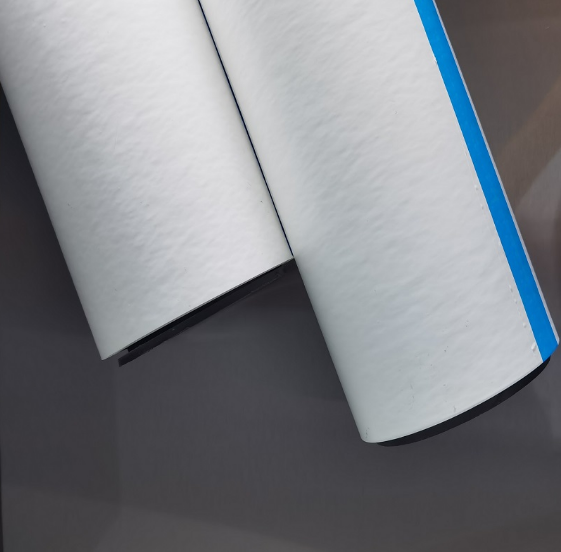May. 25, 2023
Automotive surface protection films, such as clear bra films and paint protection films, are designed to safeguard the exterior surfaces of vehicles from scratches, stone chips, UV damage, chemical stains, and fading. To ensure their longevity and effectiveness, proper maintenance and care are essential. In this article, we will discuss the maintenance and care practices for automotive surface protection films, including cleaning procedures, recommended products, and tips for prolonging their life.

Regular cleaning is crucial for maintaining the appearance and performance of automotive surface protection films. Here are some guidelines to follow:
- Use a mild automotive shampoo or soap and mix it with water in a bucket.
- Rinse the vehicle's surface with clean water to remove loose dirt and debris.
- Gently wash the protected areas using a soft, non-abrasive sponge or microfiber wash mitt.
- Avoid using brushes or scrub pads that may scratch the surface protection film.
- Rinse the surface thoroughly with clean water to remove all traces of soap.
- Dry the vehicle with a clean, soft microfiber towel or chamois to prevent water spots.
When cleaning automotive surface protection films, it is important to avoid harsh chemicals that can damage or degrade the film. Here are some things to keep in mind:
- Avoid using aggressive solvents, abrasive cleaners, or acidic products as they can cause discoloration or damage to the film.
- Do not use petroleum-based products, strong degreasers, or ammonia-based cleaners on the film.
- Check the labels of cleaning products to ensure they are safe for use on painted surfaces and automotive films.
During driving, bugs, tar, and other road debris can accumulate on the surface protection film. Prompt removal is recommended to prevent staining or damage. Here's how to handle bug and tar removal:
- Soak a clean microfiber cloth or sponge in warm, soapy water.
- Gently apply the cloth or sponge to the affected area and allow it to sit for a few minutes.
- Gently wipe away the bugs or tar using light pressure. Do not scrub aggressively.
- Rinse the area with clean water and dry it thoroughly.
Automotive surface protection films are resistant to many common chemicals, but certain substances can still cause staining if left untreated. Here are some tips to protect against chemical stains:
- Avoid prolonged exposure of the film to chemicals such as gasoline, oil, brake fluid, and harsh solvents.
- If any spills occur, promptly rinse the affected area with water and dry it thoroughly.
- Regularly inspect the film for any signs of chemical staining or discoloration. If detected, consult a professional for proper removal and restoration.
Automotive surface protection films do not require waxing or polishing, as they are designed to be self-healing and maintain their gloss. However, if desired, a high-quality, non-abrasive wax or polymer sealant can be applied to enhance the appearance and provide additional protection. Here are some considerations:
- Use a wax or sealant specifically formulated for use on paint protection films.
- Apply the wax or sealant according to the manufacturer's instructions, using a clean, soft applicator pad.
- Avoid waxing or sealing the edges of the film to prevent adhesive weakening.
Proper parking and storage practices can contribute to the longevity of surface protection films for automotive. Consider the following:
- Park the vehicle in shaded areas or covered parking spaces when possible to minimize exposure to UV radiation.
- Avoid parking under trees where sap, bird droppings, or other debris can fall onto the film.
- If the vehicle will be stored
for an extended period, consider using a breathable car cover to protect it from dust and environmental elements.
Regular professional inspection and maintenance of the automotive surface protection film can help identify any issues and ensure optimal performance. Consider the following:
- Schedule periodic inspections with a professional installer or detailer experienced in working with automotive surface protection films.
- Address any concerns or issues promptly to prevent further damage or deterioration.
- Follow the manufacturer's recommendations for maintenance and care, as they may provide specific guidelines for your particular film.
By following these maintenance and care practices, automotive surface protection films can continue to provide excellent protection and maintain their appearance for an extended period. Regular cleaning, avoiding harsh chemicals, prompt bug and tar removal, protection against chemical stains, appropriate waxing and polishing (if desired), proper parking and storage, and professional inspections contribute to the longevity and effectiveness of these films, keeping your vehicle looking its best.
Navigation
+86 158 1691 5404
+86 757 8271 3937
+86 757 8271 3937
No. 10 Industry Huacongsiyue Village, Shishan Town, Nanhai District, Foshan, Guangdong Province, China